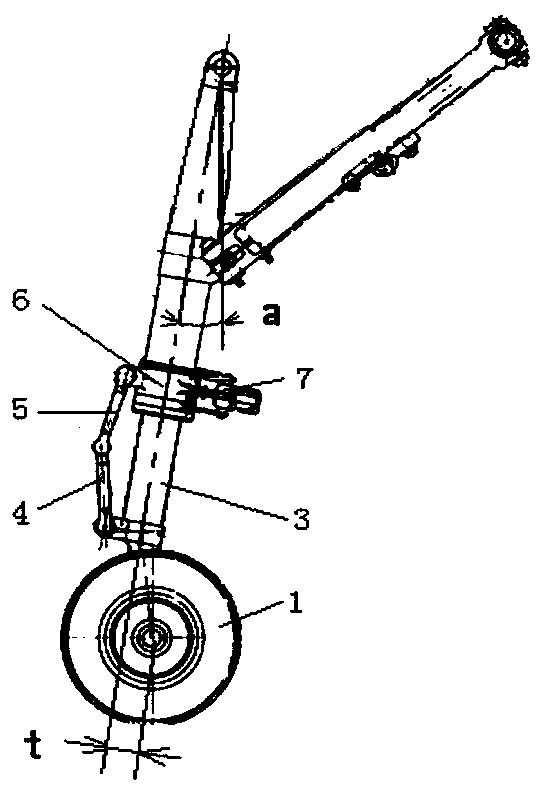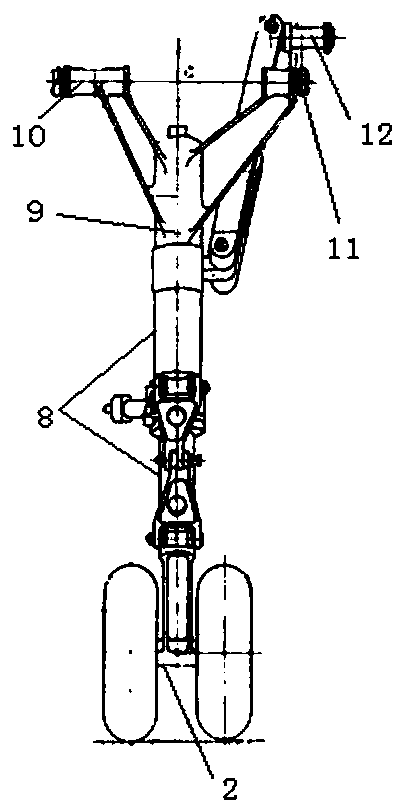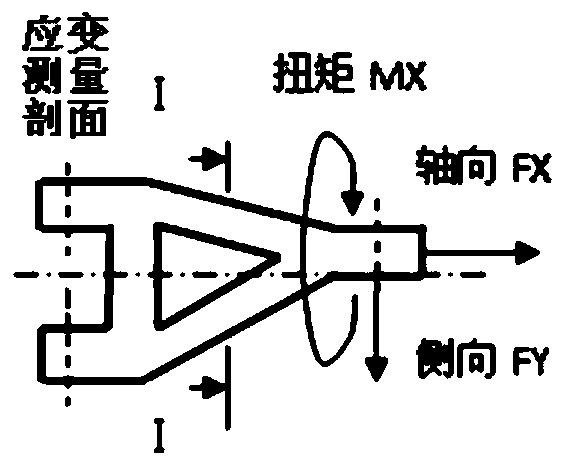A Ground Calibration Method for Torsion Arm Load of Dual-wheel Strut Type Nose Landing Gear
A technology of nose landing gear and calibration method, applied in force/torque/work measuring instruments, instruments, measuring devices, etc., can solve the problem of insufficient consideration of anti-fatigue design, not measuring internal load, high-frequency alternating load fatigue, etc. problems, to achieve wide versatility and practicability, and to optimize and improve the effect of design
- Summary
- Abstract
- Description
- Claims
- Application Information
AI Technical Summary
Problems solved by technology
Method used
Image
Examples
Embodiment Construction
[0025] 1) Determine the torque arm load and transmission
[0026] Such as figure 1 and figure 2 As shown, by analyzing the loading of the two-wheel strut-type nose landing gear in flight operations such as ground taxiing, turning, take-off, landing impact, and braking, it is determined that the cockpit manipulation or external excitation causes the upper torsion arm 5 and the lower torque arm 5 of the nose landing gear. The torsion arm 4 mainly bears the axial load, the lateral load, and the torque load caused by the combination of the forward tilt angle a of the pillar 8 and the setback distance t of the wheel 1; according to the force transmission analysis, the aforementioned load components Transmission between the wheel 1, the axle 2, the piston rod 3, the lower torque arm 4, the upper torque arm 5, the rotating sleeve 6, the turning actuator 7, the pillar 8 and the outer cylinder 9;
[0027] 2) Draw up the layout of the torque arm strain gauge
[0028] Such as image...
PUM
 Login to view more
Login to view more Abstract
Description
Claims
Application Information
 Login to view more
Login to view more - R&D Engineer
- R&D Manager
- IP Professional
- Industry Leading Data Capabilities
- Powerful AI technology
- Patent DNA Extraction
Browse by: Latest US Patents, China's latest patents, Technical Efficacy Thesaurus, Application Domain, Technology Topic.
© 2024 PatSnap. All rights reserved.Legal|Privacy policy|Modern Slavery Act Transparency Statement|Sitemap



